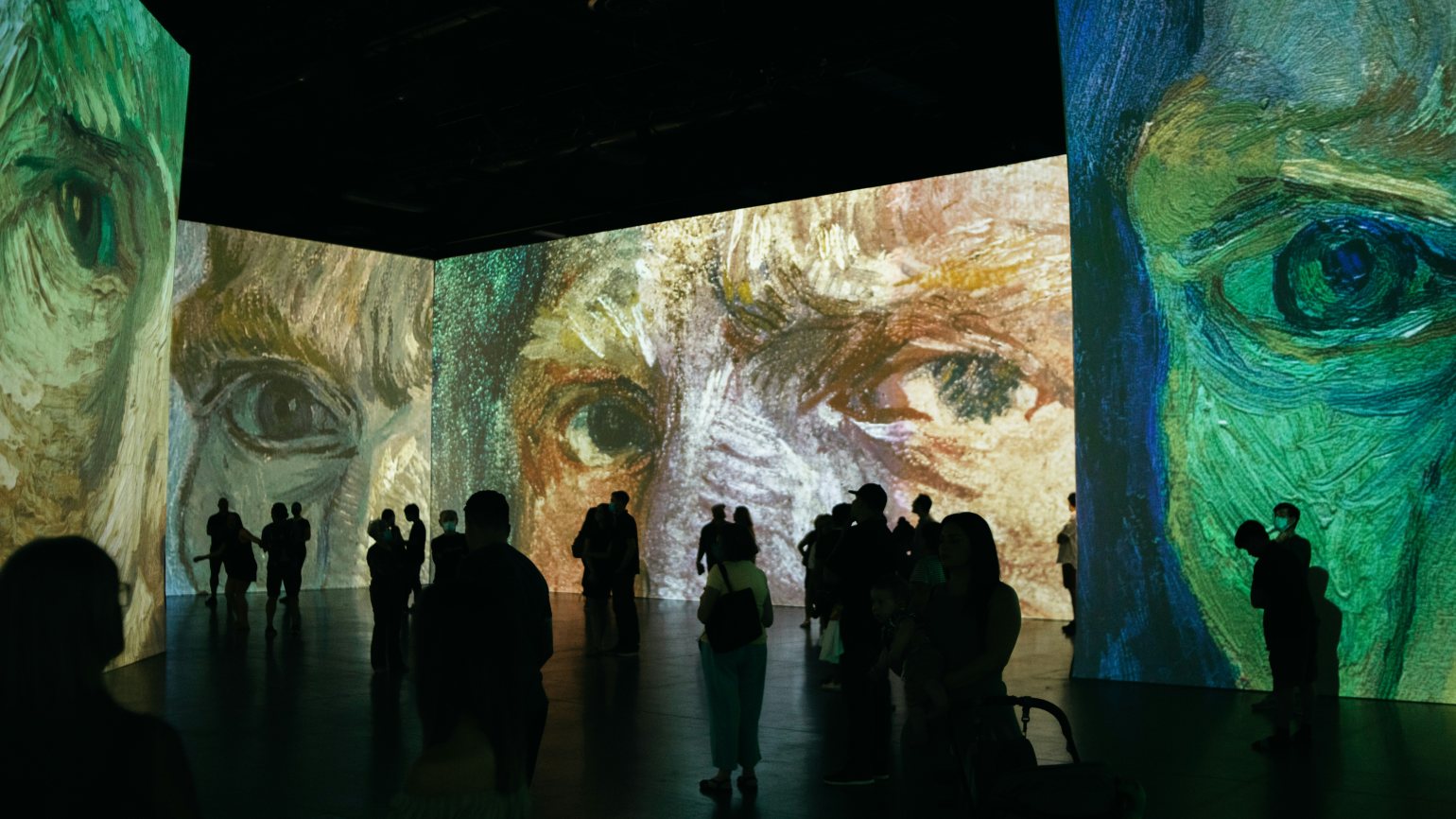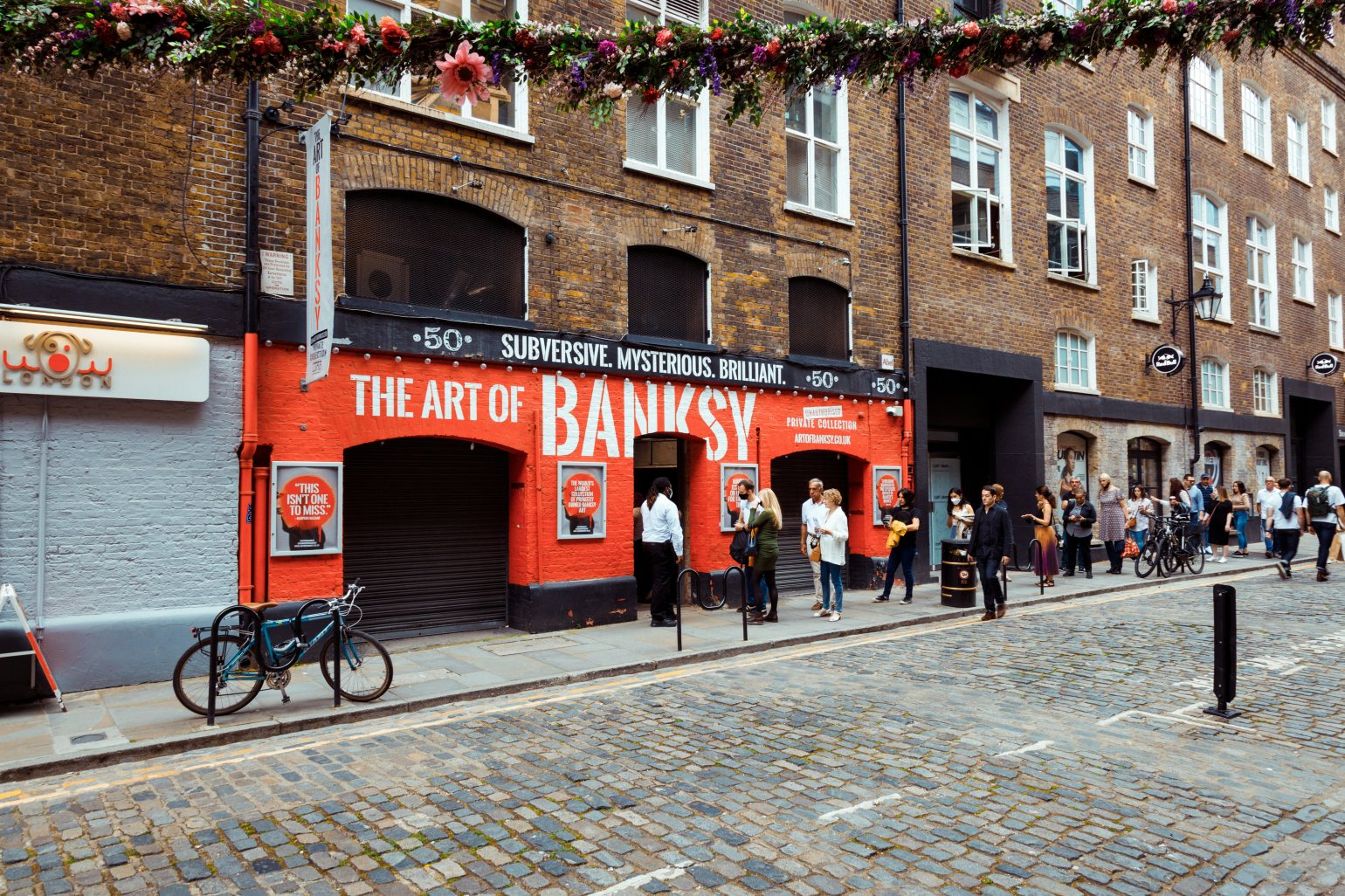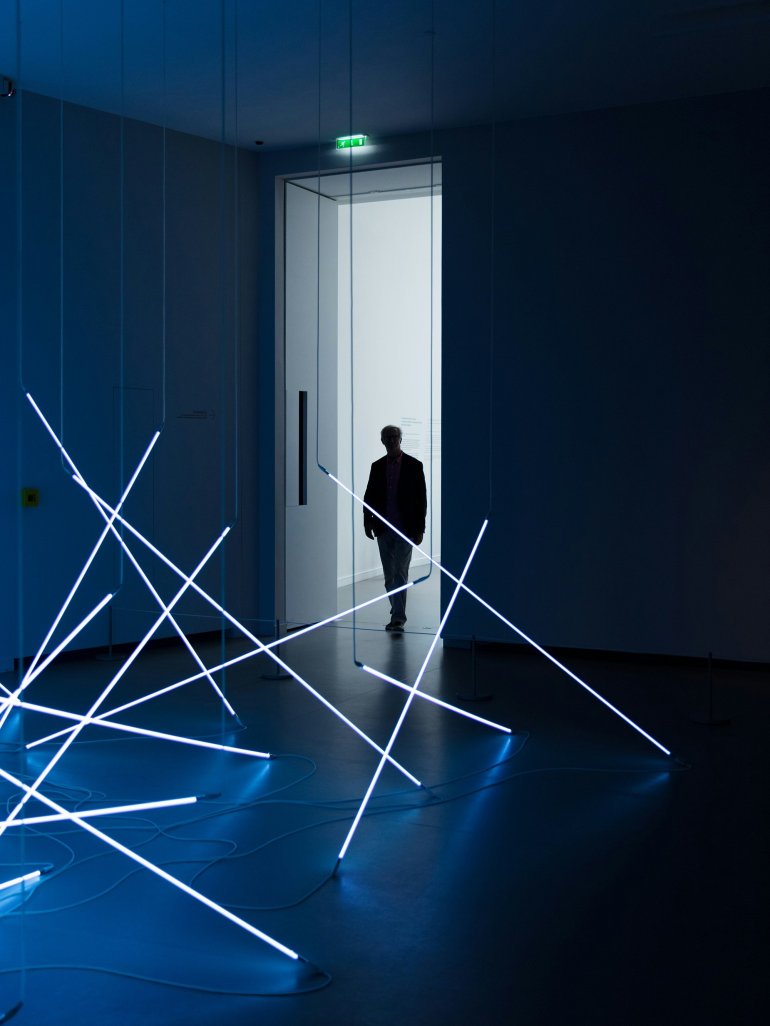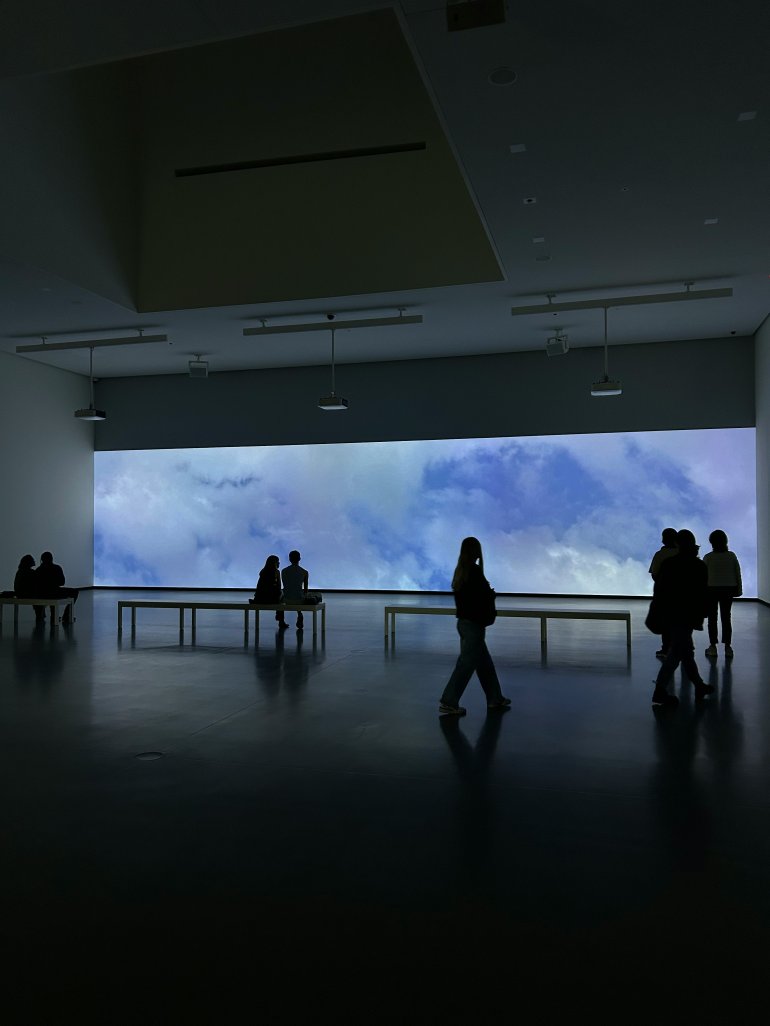Immersive Art Vs Protected Artworks: Balancing Engagement with Preservation
![]()
Summary: While the boundaries between art and experience continue to blur, galleries and museums face a complex balancing act of creating exhibition spaces that attract and engage visitors while still protecting the precious artworks on display.
“We do not see things as they are, we see them as we are.”
— Anaïs Nin
In recent years, immersive and interactive exhibitions have surged in popularity, offering audiences highly sensory and often participatory methods of connecting with art.
But what new challenges does this conflict between engagement and preservation present for museums and gallery curators? And how do institutions carefully navigate those tensions to meet both visitor expectations and conservation standards?
Every visitor brings with them a different way of seeing - our job is to let them look closer, without losing sight of what we’re preserving.
The rise of immersive exhibitions
Immersive exhibitions are becoming cultural events in their own right. The popularity of Van Gogh Exhibit: The Immersive Experience, which has toured internationally since 2017, or Yayoi Kusama’s Infinity Mirror Rooms at Tate Modern, reveals a public appetite for large-scale, interactive environments – installations that often prioritise spectacle and digital engagement, transforming gallery spaces into cinematic, almost theatrical stages. Spaces like Outernet London push this further still, blurring the line between exhibition, entertainment, and digital art.Indeed, modern audiences, especially younger visitors, are now preconditioned to expect experiences that feel participatory, social, and shareable. According to the Arts Council England’s 2023 research into cultural participation, and echoed by Adam Rozan’s insights on contemporary museum audiences, there has been a clear shift: visitors no longer see themselves as passive observers but as active participants.
Rozan describes today's museum-goers as life and activity enthusiasts who expect to engage with exhibitions in ways that align with their digital, social lifestyles.
The knock-on effect is that institutions are having to rethink their approach to space, programming, and even physical access to collections. There’s an expectation to no longer simply look but to interact, personalise, and document experiences – whether through photography, social media, or hands-on activities.
This brave new reality is reshaping how exhibitions are conceived and delivered, encouraging museums to embrace a hybrid model where traditional display methods meet the participatory demands of a digitally fluent audience.
The risks of increased interactivity
With greater interactivity, of course, comes increased risk. The more open and tactile a display becomes, the more challenging it becomes to ensure the safety of both visitors and artworks. Balancing the demands of immersive experience with traditional principles of artwork preservation is a tricky curatorial knot to untangle.Rozan’s analysis of audience behaviour reinforces the dilemma: today’s visitors expect flexibility and freedom, often interacting with museums before, during, and after their visit through digital platforms.
In such an environment, traditional notions of control will naturally evolve. As well as footfall and audience movement, curators and designers are required to anticipate digital engagement habits, spontaneous participation, and the somewhat grey area that exists between viewing and sharing.
Museums now operate as what Rozan describes as modern-day town squares, where social interaction is as much a part of the experience as the exhibition itself – a shift that makes it essential for institutions to design exhibitions that offer opportunities for engagement without compromising conservation.
Achieving this compromise requires thoughtful integration of technology, space planning, and museum and gallery products that allow for interaction while maintaining the integrity of the collection.
When audience participation goes too far
One piece that captures the complexities of modern exhibition design is Comedian by Italian conceptual artist Maurizio Cattelan. First shown at Art Basel Miami Beach in 2019, Comedian featured a single banana duct-taped to a white wall – a minimalist provocation priced at $120,000. Despite its simplicity, or perhaps because of it, the work sparked a media frenzy and became a lightning rod for debates about the value of contemporary art.The situation escalated when performance artist David Datuna pulled the banana from the wall and ate it in front of a crowd of stunned visitors. Though the act was arguably in keeping with the spirit of conceptual art, it posed a real dilemma for organisers. With the artwork now a health and safety concern due to swelling crowds and unpredictable visitor behaviour, the decision was made to remove the piece early.
The incident was a real-world example of the risks associated with open or unprotected artworks. In creating a work that was provocative, Cattelan also inadvertently exposed how easily traditional gallery norms can collapse when the audience becomes an active participant.
Another example is Yayoi Kusama’s Infinity Mirror Rooms. Kusama's installations have faced repeated incidents of visitors damaging artworks—mostly unintentionally. In 2017 at the Hirshhorn Museum in Washington D.C., a visitor trying to take a selfie in one of the mirrored rooms accidentally stepped off the designated path and broke a glass pumpkin sculpture (All the Eternal Love I Have for the Pumpkins). The exhibition had to be temporarily closed, and stricter controls were introduced, such as time limits and smaller group entries.
A final example, while not immersive in a high-tech sense, is The Art of Banksy (Unauthorized) – Toronto. This touring show leaned heavily on experiential presentation. In 2018, organisers faced challenges with overcrowding and visitor management, which diluted the experience and led to safety concerns. It reflected a broader issue with "Instagrammable" exhibitions where demand outpaces infrastructure.
![]()
Designing for safety without losing impact
The challenge for gallery curators and designers is to maintain the impact of an exhibition while creating an environment that assures safety and control.One great example of this done well is Operation Night Watch at the Rijksmuseum, Amsterdam. The Rijksmuseum struck a balance between public engagement and preservation by turning the restoration of Rembrandt’s The Night Watch into a live, transparent process. Visitors could view the conservation work through a glass chamber in the gallery, blending immersive education with strict environmental and handling controls. This approach maintained conservation integrity while deepening public connection to the process.
Another is Tate Modern, London – Olafur Eliasson: In Real Life. This exhibition included immersive installations like Your Blind Passenger (a fog-filled tunnel), which fully engaged the senses but was carefully curated to ensure that works with conservation sensitivity were housed separately. Tate’s programme often juxtaposes high-interaction pieces with protected traditional works, using spatial planning and technology to maintain environmental control.
Fondation Louis Vuitton in Paris offers a different kind of immersive experience—one grounded in architecture and contemporary art. Designed by Frank Gehry, the building itself is a sculptural, sensory encounter, with its glass sails and dynamic forms inviting exploration. Recent additions like the Architectural Journey VR experience allow visitors to virtually access areas of the building not open to the public, deepening engagement without disrupting the integrity of the space. Exhibitions often include large-scale installations and multimedia works, but they’re presented with meticulous spatial planning, robust interpretation, and environmental controls—demonstrating that immersive doesn’t need to mean chaotic.
Photos Below: Fondation Louis Vuitton, Paris, France.
![]()
![]()
At Fondation Beyeler, Switzerland, the exhibition Yayoi Kusama: Infinity Mirror Room, Kusama’s immersive installations, like her mirrored rooms, offer highly engaging experiences. Fondation Beyeler addressed conservation challenges by limiting time inside, controlling visitor flow, and using precise lighting and climate management. The space was engineered to withstand high footfall without compromising long-term preservation.
In the case of Comedian, a visually subtle museum barrier could have helped to prevent interference without detracting from the conceptual intent. To illustrate, Absolute’s own tongue-in-cheek reinterpretation of the piece, titled Absolutely Bananas, used our Essential Barrier system with bright yellow cord and hung the banana from our invisible Perlon Cord hanging set to present the work securely – demonstrating that even works intended to provoke could be displayed within a protected format.
Careful consideration of the curation, zoning, visitor management, technology and exhibition equipment are all important aspects of striking that balance between immersion, interactivity and creating safe spaces for both the art and the visitor. Environmental controls such as lighting, temperature, and humidity must be maintained even in high-tech or high-footfall spaces, while accessibility, wayfinding, and safeguarding against sensory overload are equally vital to ensuring inclusive, secure, and enjoyable experiences.
Striking the right balance
The future of exhibition design likely lies somewhere in the middle ground — embracing audience expectation while respecting the physical and cultural integrity of artworks. It’s not an either/or decision: institutions have the access and opportunity to do both. Through careful design and with the right hardware, they can create spaces that are exciting, thought-provoking, and above all, considerate of both art and audience.If you'd like to find out more about our range of museum-grade barriers, hanging systems, and display solutions, get in touch with our team today. We're here to help you create experiences whilst protecting and presenting your collections with confidence.
-
Posted by Jade Turner
30th April 2025




